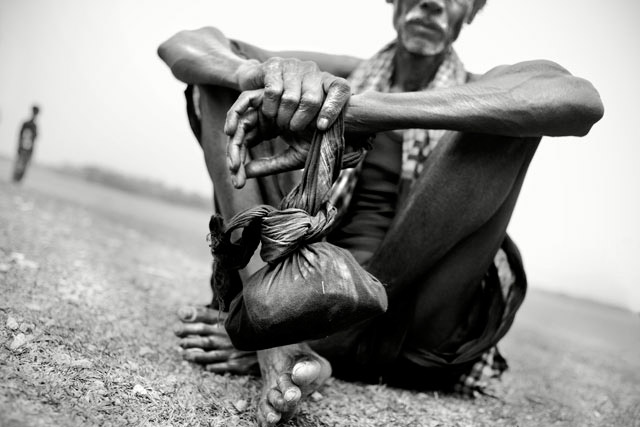
A Hindu religious devotee takes rest before the start of Charak Puja at Moulvibazar, Bangladesh.
Bengal is in the northeast region of the Indian subcontinent that consists of East Bengal located in Bangladesh and West Bengal located in the eastern part of India. The Bengali people inhabit this area and it is one of the most densely populated regions on earth and is known for its many festivals.
There is an array of religious festivals and celebrations held yearly worldwide. In the spirit of keeping a complex Hindu festival simplified, we’ll share the essence of the famous Charak Puja festival, also known as the Nil Puja in the Southern Belt of Bangladesh, along with its unique rituals.
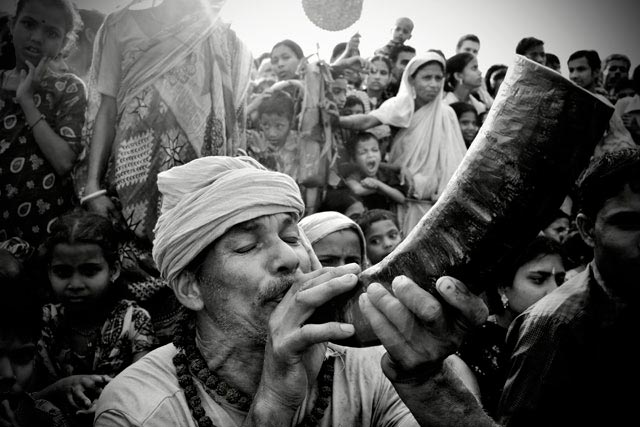
A Hindu religious devotee is tusking in devotion to “God”.
On the 14th of April each year, the last day of the Chaitra month (last month of the Bangla calendar year), the people of the Hindu religion celebrate the traditional folk festival called Charak Puja – a festival to satisfy Lord Shiva and to say goodbye to the past year and welcome in the new year. It is believed that prosperity will carry over to the following year if all the pains, sorrows and sufferings of the previous year are eliminated. In essence, the ancient tradition is an act of penance and people from all over the country come to take part in and witness the devotion of the devotees.
In preparation for the Charak a group of individuals, called the arrangement team (Charak Sanyasis) will start the process. At least one month in advance of the festival the team will travel from village to village to acquire donations of rice, oil, sugar, salt, honey, money and other necessary items, such as cosmetic man Shiva, Parvati and Narod. The sanyasis will fast for this entire month, eating only fruits. It is also a time when daily worship is performed in order to receive the blessings of the lord. It is a ritual called “Brata”.
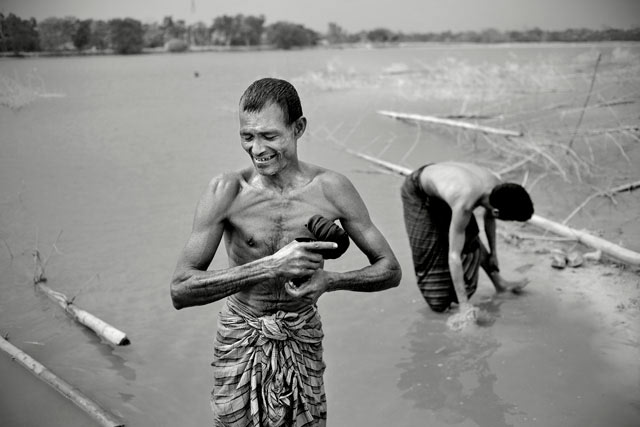
A Hindu religious devotee just finished his bath and is getting ready to participate in the festival.
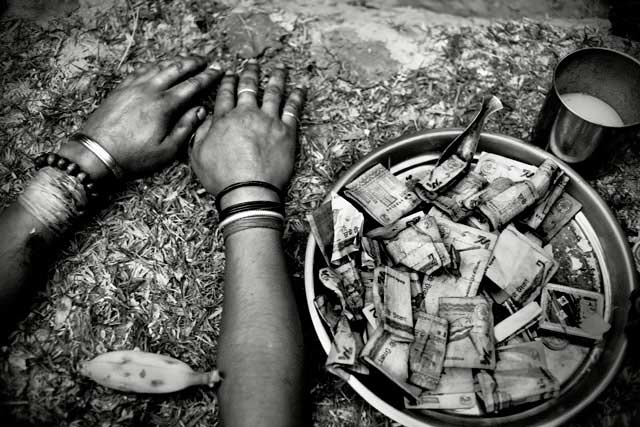
A Hindu religious devotee showing his deep devotion to God before starting of the rituals.
The sanyasis have been highly trained for many years in order to achieve siddhi (spiritual powers) and are guided by an experienced sadhu – one who is considered a saint. Near midnight of the 14th, prayers are given to Lord Shiva and preparations are made for the events that will follow.
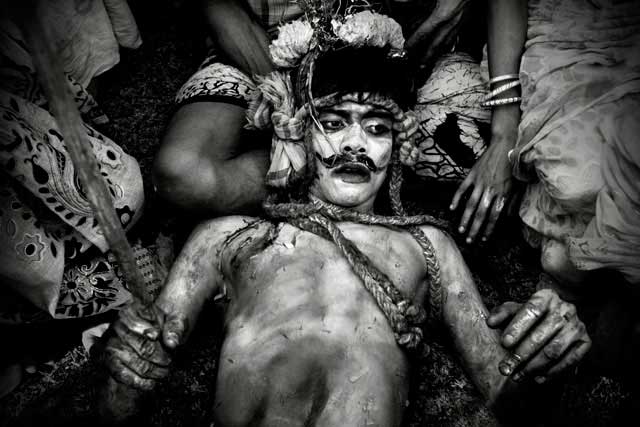
A man who performs as the cosmetic man Shiva.

The feet of a group of Hindu religious devotees
are stepping in preparation of the Charak pole.
A 10-15 foot high bamboo stage is erected and the platform is covered with glass, knives and other sharp objects. It is here where the sanyasis will show theirstrength as they walk, dance and throw themselves upon these sharp objects. Why do they not get injured? Why do these impossible feats become possible? The devotees believe they are blessed and protected by the Lord as they perform this Kali dance.
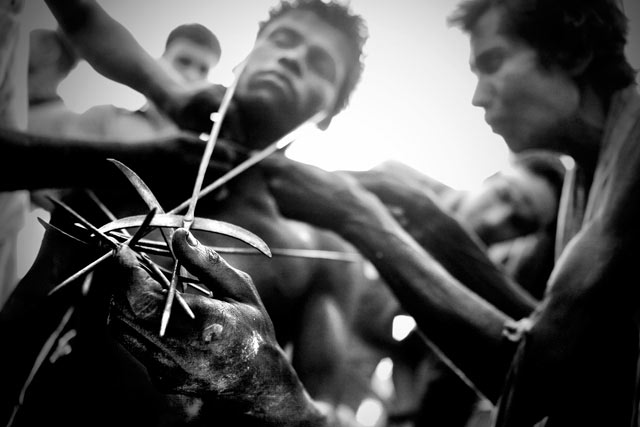
A boy piercing metal rods through several of his body parts.
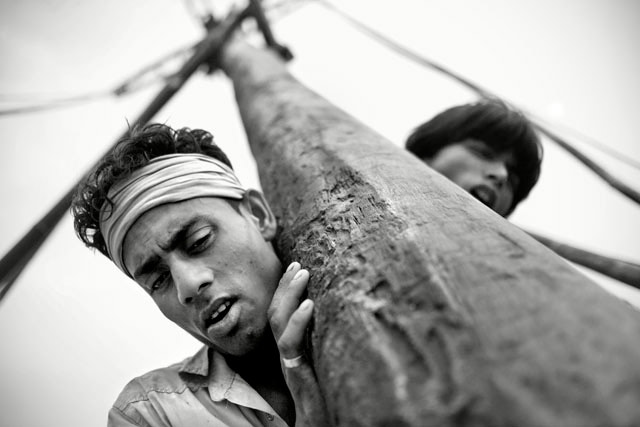
Two young men are singing devotional songs while they hold the Charak pole.
Then the trunk of the divine ritualistic Charak tree – a 30-40 foot pole – is carefully and religiously erected. It has horizontal poles attached at the top from which hang long ropes with large metal hooks, called a ‘’Borshi’’, at their ends. It will be around the Charak tree where the explosive excitement of the main attraction of the festival will occur. The exceptional performer’s backs will be pierced with the sharp metal hooks by the sadhu. The sanyasis will then be hosted up and will swing from these hooks as they are rotated around the Charak tree. One would certainly think they would be in great pain. According to tantric belief, it is considered a performance of stomvon – a meditative act in which piercing of the skin is painless and bloodless.
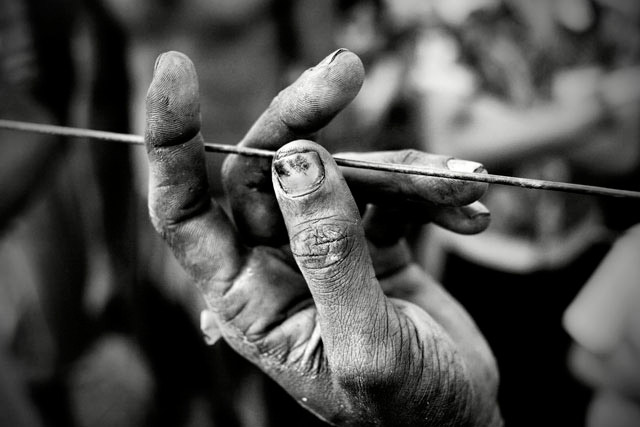
A performer holds the rod before inserting it in his skin to move round around the Charak pole with a long rope to satisfy God Shiva.
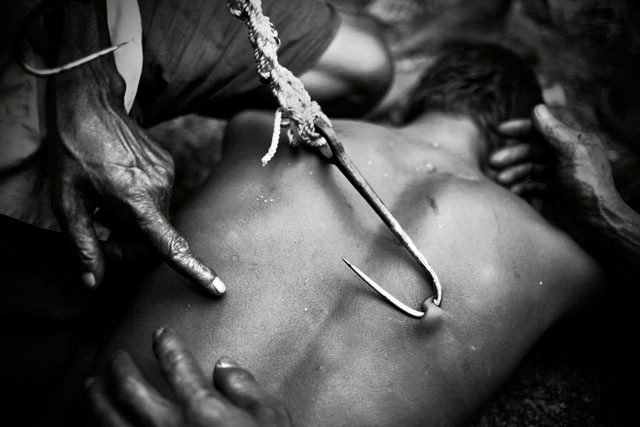
A Hindu religious devotee inserting rod in his body at the back through skin to move round around the Charak pole with a long rope to satisfy God “Shiva” during Charak puja a holy worship in Moulvibazar, Bangladesh.
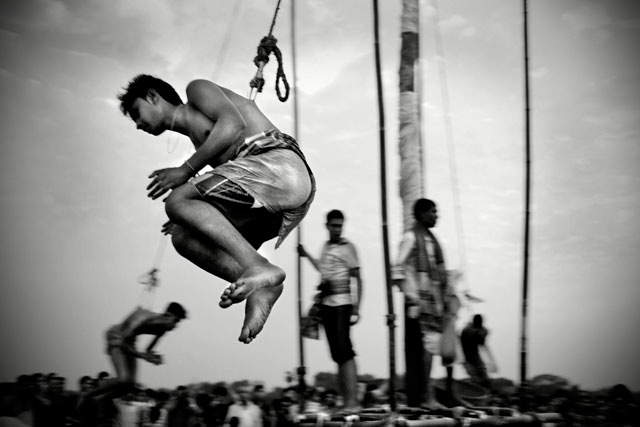
Performers of Charak Puja moving round around the Charak pole to show their devotion to God.
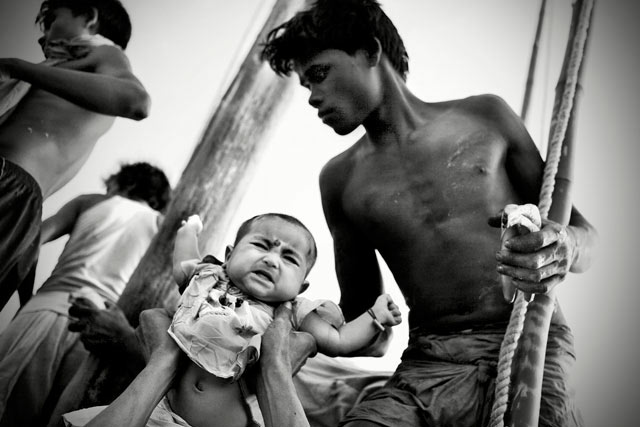
Hindu religious devotees believe that by touching the Charak pole they will be blessed by God and thus they will give their child to the performer.
Along with the Kali dance and and Charak pole performances, various acts of body piercings and dancing on hot embers will take place. They are all intriguing and rather scary acts of penance in order to show “Gods” blessings and achieve salvation.
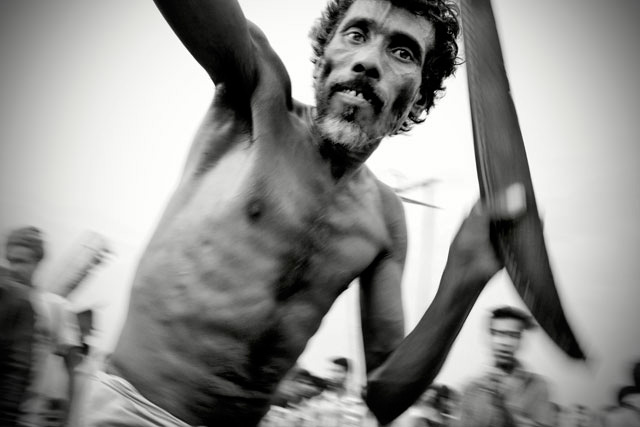
A Hindu religious devotee performing with a knife.
The festival ends by immersing the Charak tree in river water. Prayers are given that the festival will continue for each and every year to come. And on the following day the Bangla New Year’s, Poila Baisakh, celebrations begin.
Researched and written by Marla Meier.
Photographs: © 2014 Sumon Yusuf. All right reserved.

Leave a Reply